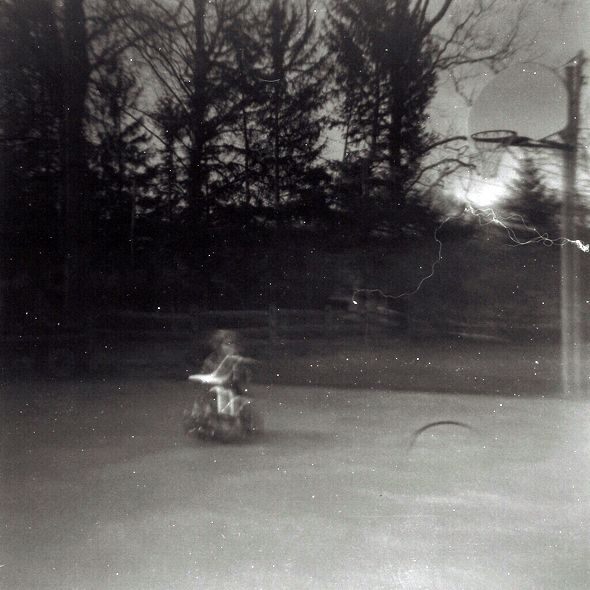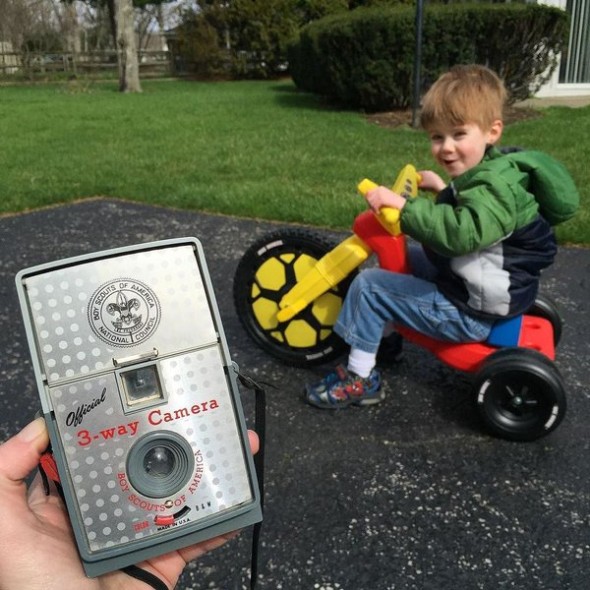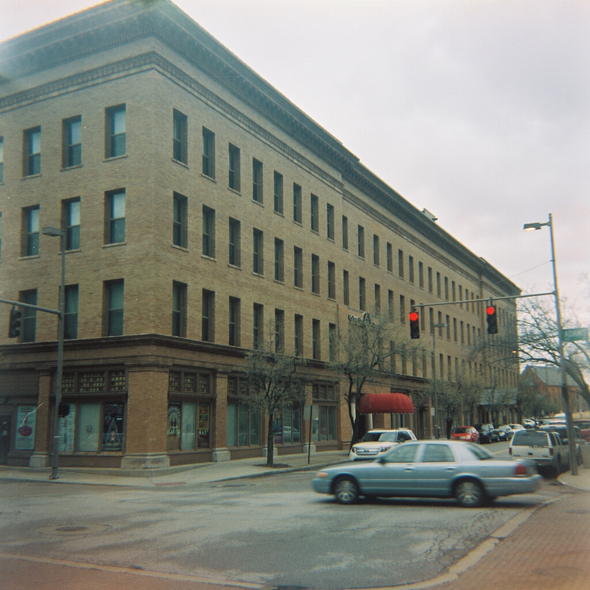
I found the Official Boy Scout 3-Way Camera at the local antique mall back in late March — I probably shouldn’t have paid $14.50 plus tax for it, but I did. Not the entire kit, as advertised above in the December 1959 issue of Boys Life, but just the camera.
And it still had film in it!

I finished the roll of film in the camera with my son — alas, the photo above, taken in the antique mall, was the only “found” photo that came out. The photos we took at home on the found roll were actually fairly salvageable with only minor digital tweaks.



After we finished off the found roll, I loaded the 3-Way up with fresh film and took it to work with me for a couple days of photo walks downtown.
The first half of the roll I exposed on an overcast day. I didn’t expect anything to come out, really, but I always like to try my cameras — especially box cameras — in a variety of lighting situations.

That first exposure was the only one that turned out pretty normal. After that, this old camera started showing its true colors.

There’s an obvious light leak, but maybe also film plane issues? The upper left of the frame is underexposed with a light leak, and the lower right looks double-exposed.
The following week, I used up the second half of the roll on a bright, sunny day. I thought I felt the film slipping when I’d advance, and more than once the camera advanced past the center of the frame on its own between exposures. I expected overlapping exposures, but I didn’t expect the crazy light leaks and blurry images I actually got.


I’m really not sure what to do with this camera. It does have two settings, for Color and B&W, and I used the Color setting, since I was using color film. (The “3-Way” refers to black-and-white print film, color print film, and color slide film.) The Color/B&W switch appears to just change the aperture from a larger one to a smaller one, rather than actually apply a filter, but I could be wrong (and I admittedly haven’t Googled it yet).
If this camera took 35mm or 120 film, I’d be all up for continuing to experiment… but it takes 127, which is not cheap to buy or to get developed. My general rule is that all cameras in my collection are functional pieces that I could load up and take out for a specific purpose. This one, though… I can’t bring myself to get rid of it, or spend the money to put another test roll through it, so I suppose it will sit on the shelf and be an interesting conversation piece.